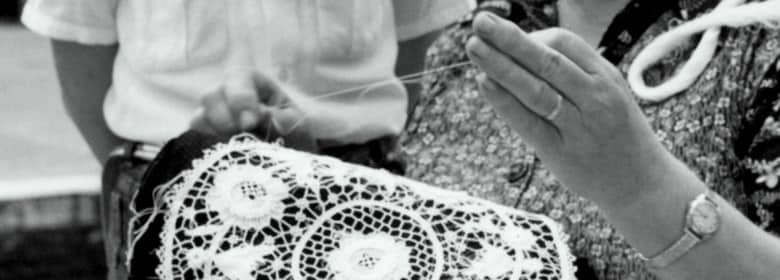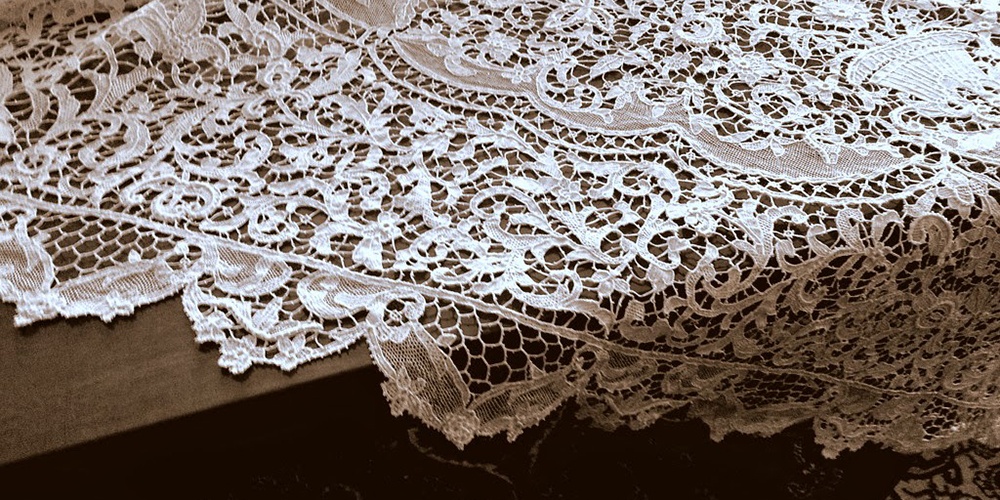A centuries-old art that combines passion, tradition and dedication
The brightly colored houses, the clothes hanging and the old women embroidering lace. We are in Burano, a picturesque and characteristic island in the northern lagoon of Venice that has about 3,000 inhabitants, made up of four islands separated by internal canals and five sestieri (districts). In its origins it was a modest fishing community and the art of Venetian lace was carried out by women who traditionally carried out their business on the doorstep, in the company of friends and family. The characteristic coloring of the houses is linked to the activity of fishing, initially dyed by fishermen to be able to recognize them from afar even in winter, with the presence of fog. Later this custom spread throughout the island and today the colors are used to delimit the ownership of the houses, making it a tourist destination with an incredible visual impact not to be missed when visiting the Lagoon and the city of Venice.
The history of lace is lost in the mists of time and is linked to conjectures or legends. For some, the typical Buranella processing would be connected to the seafaring tradition of the inhabitants of the small island, linked to fishing and consequently to the manufacture and repair of nets on site.
A strong push to spread this type of craftsmanship was given by the dogaressa Morosina Morosini, who at the end of the 16th century created a workshop in Venice, in which 130 lace makers were employed. On her death the workshop was closed, but the art of lace continued to be cultivated. Given the strong demand, they studied to organize the production and marketing of Venetian lace: the Merciai Corporation assumed the prerogative, organizing the work in homes, orphanages, convents, hospices, islands, thus becoming in the century XVII (era of the lace boom in Europe) one of the richest guilds in Venice.
Over the years the Burano lace acquired international fame. Rare and precious commodity, it became part of the trousseau of various European families of primary importance: at the coronation of Richard III of England (22 June 1483), Queen Anne wore a rich cloak decorated with Burano lace; in the same way, various members of the Tudor family, Caterina de' Medici, Bianca Cappello and many others bought lace. Precisely through the work of Caterina de' Medici and - in subsequent years - of the Minister Colbert, some lace makers moved to France: in a few years, the Buranelle lace makers became over 200, teaching their art to French colleagues: the day of his coronation (May 14, 1643) Louis XIV wore a lace collar made by the Buranelle lace makers, who had taken two years to finish it.
In the winter of 1872, thanks to the interest of Countess Andriana Marcello and the honorable Paolo Fambri, it was decided to try to revitalize the ancient tradition of Burano lace, with the main aim of alleviating the sad economic conditions of the island. An elderly lacemaker named Vincenza Memo - known as Cencia Scarpariola - who was the last custodian of all the secrets of art was then asked to pass them on to the elementary teacher Anna Bellorio d'Este, who in turn passed them on to her daughters and a group of girls. Thus it was that the Lace School of Burano was born in the ancient palace of the podestà, which thanks to the orders of the Countess Marcello and a series of noblewomen she consulted - including the Princess of Saxony, the Duchess of Hamilton, the Countess Bismarck, Princess Metternich, Queen of Holland and Queen Margaret - made work and commerce flourish again. In 1875 the Lace School already had over 100 pupils.
The school worked six hours a day in winter, seven in summer. Ladies were admitted at age 12, after six years of home schooling. At the age of 18 they spent in the group of experienced workers until marriage, after which they returned to work at home. According to a list of pieceworkers from 1876, the lace makers were divided by operations: Ordidura, Rete, Guipure, Relief and Stuffed, Stelle, Piccò, Detachment, Cleaning, Unions.
The technique that characterized the Venice and Burano school of lace was the stitch in the air, performed with the use of only needle and thread, without any support. Over the centuries, various points were used, some of them invented by Buranelle lace makers. Among them, we remember the Venice point (so called because it recalls the bridges of the city), the Burano point (net made with very thin thread, reminiscent of the island's fishermen's nets), the needle point, the pink point, the cape point, etc. The strictly needlework is typical of Burano lace: the original Burano laces are distinguished by the extreme complexity of the design and the execution technique, the use of very thin threads (cotton, linen, silk, golden or silver) , and consequently an extremely long process, for which a study and application that is often decades-long is mandatory.

The Martina Vidal Venezia Atelier: the tradition of Burano lace in a contemporary key

The collection of antique lace at the Martina Vidal Atelier

The collection of antique lace that once served to embellish the most important residences in Europe and to adorn ladies and knights on the most important occasions, today constitute the heart of the Museum's collection. In the Atelier you will also find the modern “Burano Collection” made up of tablecloths, table centerpieces, sheets, handkerchiefs, collars, fans and bridal veils. An extraordinary craftsmanship that can still be admired today and that fascinates visitors from all over the world every day.
The Martina Vidal Venice Atelier is a household linen store designed by the brothers Martina and Sergio Vidal as a concept store where you can experience knowledge and skills of your ancestors and customers in search of authenticity and originality are satisfied. Born as a small artisan shop, today the Atelier is presented in a three-storey building and the products for sale concern accessories and linen not only for the home but also for the person. To complete this wonderful setting, the Venice Secret Garden: a garden created from a typical Venetian garden where guests can relax and enjoy the peace of the island, perhaps enjoying a cup of coffee.
The collections are proudly Made in Italy, the result of great craftsmanship and creativity, made with fine and high quality fabrics: cashmere, silk, cotton satin and the best linen yarns. One collection is dedicated to hand-embroidered linen. The continuous search for uniqueness and beauty is linked to Italian culture and tradition so that the knowledge handed down to us can be the key to inspiration and success.
The Atelier was visited by numerous princes and crowned heads, Hollywood stars, personalities from the international jet set and famous actors. When you enter the Atelier, what you hope is to make you live a unique and unforgettable experience, so that the day spent in the narrow streets of the island allows you to carry the best memory of Burano in your heart.
About the author
Written on 29/10/2020





Domenico Moramarco
Venetian artistic craftsmanship relives in Burano lace, a centuries-old art that combines passion, tradition and dedication and which is now reinterpreted in a contemporary taste.